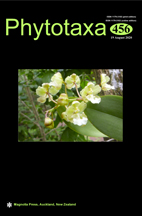Abstract
The genus Helosciadium has six species of which three have been identified in Portugal: H. nodiflorum, frequent and abundant in much of the territory, and H. inundatum and H. repens, with a scattered distribution in Portugal. In the present study, a new species, Helosciadium milfontinum, a seriously threatened plant endemic, rare and scarce that grows in the temporary ponds of the Vicentinan Coastal District is described and illustrated. Morphological characters and molecular analysis of nuclear internal transcribed spacers (ITS) and plastid regions (matK, rps16-trnK and trnL-F) confirm the existence of this new taxon. Conservation status and taxonomic relationships of the new species are examined.

